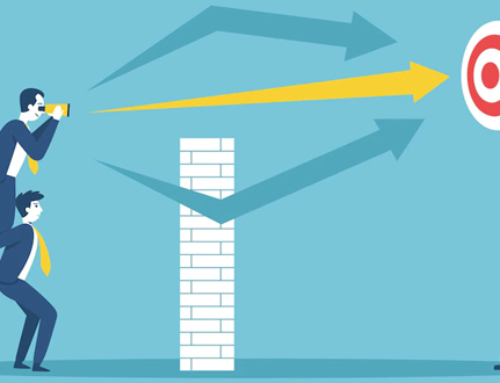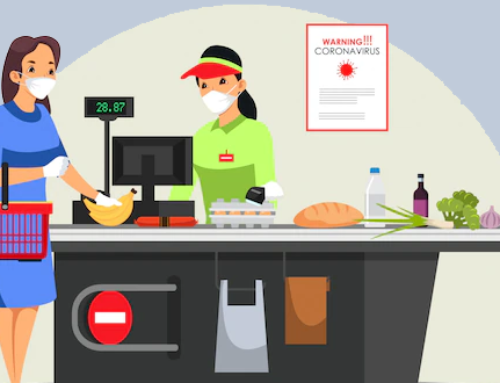Introduction to website security
There’s a threat to your company. Nobody desires to hear that, but regrettably, there are numerous criminals who attempt to access various sites on the Internet. They might do this to get attention, steal important information, or just to enjoy wreaking havoc.
Your website could be compromised for any number of reasons. There are techniques to counter those attempts, so don’t be concerned. You can keep your website safe and secure if you are aware of any potential risks to it and take action to counter them.
But what are these online security risks, and how can you defend your website against them? To find out the answers to those questions, first watch the video below, then continue reading. Website security refers to any measure taken or programme implemented to make sure website data is not exposed to cybercriminals or to stop the website from being exploited in any way. These procedures aid in defending a website’s sensitive information, hardware, and software against the numerous kinds of modern assault.
By implementing the right safeguards, you may protect your website from the following security risks:
- DDoS assaults. These attacks might cause your site to load slowly or even crash, taking away all capability and blocking access to it for users.
- Antivirus. Malware, which stands for “malware,” is a highly widespread danger that is used to steal important user information, spread spam, provide hackers access to your website, and more.
- Naming and shaming. If search engines discover malware on your site, this is what may happen. It can be blocked from search engine results and marked with a disclaimer that discourages people from visiting.
- Exploits of vulnerabilities. By taking advantage of weak spots in a website, such as an out-of-date Plugin, fraudsters can gain a website’s access and the data contained on it.
- Vandalization. In this assault, dangerous content from a hacktivist replaces the information on your website.
By using best practises for security measures, you may safeguard your visitors from these frequent dangers as well:
- Theft of data. Pirates typically target visitor or client data saved on a website, including email addresses and credit card info.
- Phishing tactics. Cyber scams don’t only occur in emails; in some cases, users are tricked into supplying essential information by visiting web pages that appear legitimate but are actually malicious.
- Stealing a session. A user’s session may be hijacked by some assaults, forcing them to perform undesired actions on a website.
- Harmful reroutings Readers may be diverted from the domain they meant to visit to a hostile website by certain attacks.
- Spam in SEO It is possible to confuse your visitors and send them to malicious websites by adding strange links, webpages, and remarks to your website.
Why is cybersecurity important?
Any webpage requires good security risk reduction for four primary reasons.
- Server companies look out for the server that houses your web, not the website itself. The interaction between a web and its provider can be compared to that of a housing complex where security is provided by the leadership but garage doors are the responsibility of individual residents.
- The cost is lower than a counterattack. Small companies can lose up to $427 per time due to intrusions, yet Technology captures clients only pay an average of $1 to $2 annually for comprehensive online security.
- You’ll maintain visitors and/or consumers while safeguarding your brand. One in four Americans will reportedly discontinue doing business with a company after a data leak, according to estimates. This is a horrifyingly large amount of clients.
- Fraudsters specialise in viruses that can covertly access websites and remain concealed, thus an infection may exist without a site owner even being aware of it.
- Rootkit malicious, who permits unauthorised access to the site, and data theft, which silently mines a website for cryptocurrencies, are two examples of cunning malwares. Backdoor attacks are becoming more common. In 2022, 32% of infected websites were attacked through a backdoor, and cryptocurrency has continued to grow, with usage up 23% in the first half of 2021 compared to the same time last year.
- Once a hacker is able access to your website covertly, they can grab your visitors’ information, access your data, employ phishing scams, and more without your knowledge.
What would be required for my webpage to remain protected?
There are a handful of fundamentals to think about implementing whether you are a product firm and are seeking for website security solutions to deploy or have an established site and are trying to increase privacy on it.
- SSL certificate
When important data is acquired by your blog and moved from your site to a central server, such as emails, addresses, and credit card numbers, SSL/TLS credentials safeguard that information. Although this is a fundamental cybersecurity step, it is so crucial that common browsers and search engines classify sites without even an SSL as “vulnerability,” which can make users leery of their site & frequently persuade them to leave. You should select an Encrypted connection that is the greatest fit for your company based on the functioning of your site and the kinds of personal information that are sought, such as monetary or shopping credentials.
You must take additional precautions to ensure that your website is completely safe because SSLs only protect data while it is in transmission.
- A web application firewall (WAF)
A WAF prohibits advanced threats that frequently affect cheaper or smaller businesses from ever being launched and keeps hackers from uploading computer viruses to a website. Malicious bots that automatically search for weaknesses to access or launch DDoS assaults on your business are responsible for these cyberattacks.
- A website scanner
Time is crucial when a site is attacked since a cyberattack costs more the longer it goes undetected. A internet scanner searches for spyware, security problems, and other problems mechanically. It then either works to fix them right away or highlights them so you may take the proper mitigation measures.
The scanning used by Satark not only apply fixes to get rid of computer viruses, but they constantly continuously check for hazards. They notify you immediately after something is discovered, minimising the harm it can have to your website.
- Software updates
The weaknesses and security breaches frequently identified in third-party plugins and applications put websites housed on content management software (CMS) at a larger risk of being compromised. As these upgrades frequently include the security patches that are now required, these can be avoided by promptly installing updates to plugins and core software. But use an automatic updating option makes the process much simpler.
Thankfully, there is a quick and easy approach to get everything you need to secure your website. With automated solutions that are simple to set up and pricing that corresponds to your budget, Based on image processing provides internet security simple and reasonable. We provide website scanning services with automatic malware removal, a WAF solution, automated patching, and assistance in selecting an SSL certificate, among other services.
Types of website security
Knowing the much more typical sorts of internet security risks is helpful while we discuss how to secure your site from thieves. The three biggest online security risks to your website are listed below.
- Viruses and malware
Spyware or viruses are arguably the most prevalent sort of web security risk. Hackers can infect your website with malware in a number of ways. They could start by luring you into clicking a link, or they could discover your credentials and access your website.
Terrorists infect your webpage with harmful viruses anyway they gain access. These viruses are dangerous, move swiftly, and come in a variety of shapes. Some hackers will take down your website in a matter of minutes, while others may adopt a more sophisticated strategy and remain hidden for an extended length of time to collect important data.
- Spam links
Occasionally, cybercriminals are more interested in the individuals who visit your website than the material it contains. They frequently employ spam links to target those users. In the comment board underneath your blog entries, spam links can be found rather frequently. To post that links, cybercriminals don’t need to take over your domain. The spam links might also be concealed in your articles if a hacker manages to access your website.
There are numerous possibilities for what might occur when site users click on such links. The links can occasionally take visitors to spammy advertisements, but they can also accidentally install malware onto users’ PCs.
- DDoS attacks
Distribute cognitive dissonance (DDoS) assaults are the third main category of web security risk. Over the past ten or so years, this kind of attack has become more and more common. In a DDoS attack, hackers create enormous quantities of traffic to your website by flooding it at once with phoney IP addresses. Your website becomes utterly unresponsive due to the massive influx of traffic.
This approach is bad since this stops people from visiting your blog, which makes it impossible for your internet marketing to be effective.
Web security techniques to attempt
It’s time to examine at what you can do about the online security issues your business confronts now that we’ve discussed them. Thankfully, you can use a wide range of website protection techniques; we’ll go over a few of the better ones below. Learn more by continuing to read!
1. Implement HTTPS
Utilizing HTTPS is one of the simplest ways to help secure your web. Using cryptography, the HTTPS web protocol keeps your information secure. Several companies use the fundamental HTTP protocol, but doing so makes them open to threats. People won’t want to visit a website where they feel their information is unsafe, even if your site is never attacked. And to top it all off, employing HTTP will harm your seo rankings because Google prefers HTTPS domains to HTTP sites.
It is recommended to utilise HTTPS on your website for all of those factors. Given that many web providers provide HTTPS without charging extra, there simply isn’t a compelling reason not to! internet security
2. Back up your site
Backing up your website is an additional crucial step in cybersecurity. No matter how many safeguards you erect for your website, there’s still a possibility that it will be compromised. You would really like to avoid having to start over if your website is compromised by hackers and destroyed.
You can quit fretting about with this scenario by backing up your website. You can quickly restore your website from the most recent backup if it is ever completely deleted.
You ensure that you always have the most recent version of your website available, be sure to routinely back up your web rather than just once or twice. Every time you make a significant modification to your website, you should back it up once more. If not, you run the risk of having to upload an out-of-date backup if your current version is ever lost.
3. Use passwords and 2FA
Everything governing access to your website should be pin code, which will have to go with mentioning. Use strong, current identities that are difficult to decipher.
This is because hackers frequently access websites by guessing the right password, frequently with the aid of algorithms that test several alternatives. It’s not very safe if your password may be quickly discovered or if you frequently use the same one.
You should use two-factor authentication in addition to developing passcodes and resetting them frequently (2FA). Knowing the right username won’t be sufficient – 2FA on its own because your site will call or email you after you input it to verify it’s you.
4. Install computer antivirus software
Viruses can sometimes infect websites other than your own; however, cybercriminals can also access your machine through your website. If it takes place, they might put viruses there that ruin your entire infrastructure.
That kind of attack has severe repercussions. Your archives, documents, and anything else you store on your company’s computer server will also be at risk, not simply your webpage. In essence, the hackers will have complete authority over your company. Make sure to install antivirus software on all the machines used to view your blog’s controls in order to prevent that. You have a wide range of options, so take the time to read reviews and determine the one that is ideal for you.
5. Run penetration tests
If a thief manages to access your website, it’s that they’ve discovered a hole they can squeeze through. It’s comparable to a thief breaking through a castle wall and entering. You should keep an eye out for any potential vulnerabilities on your website to prevent it from happening.
Utilizing vulnerability scans is the simplest way to accomplish it. In a testing process, a programme or a championship league portrays a criminal attempting to access your website. They search everywhere for a way in, and if they do, they’ll let you know about the opening they discovered. Then, your may address that flaw to stop actual attackers in exploiting it.
6. Monitor for malware
You won’t consistently identify vulnerabilities on your website, and you won’t usually stop hackers in their tracks. Ransomware might occasionally succeed. You’ll want to make sure you locate it quickly if that occurs.
Install at least one malware-scanning cybersecurity programme that will run continuously on your blog. The application will notify you and assist us in removing viruses from your website whenever it detects one. The destruction caused by the infection can then be repaired, and also the hole it used to enter can be patched.








